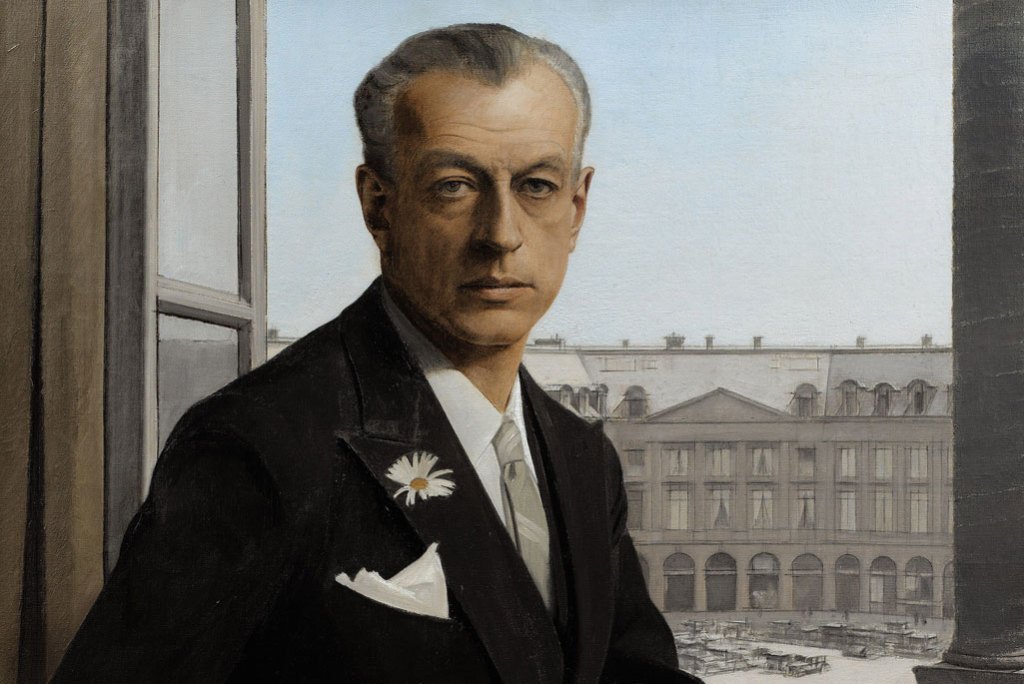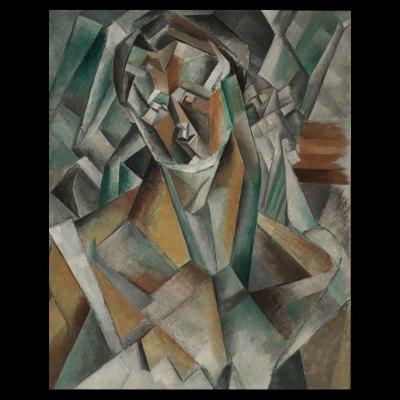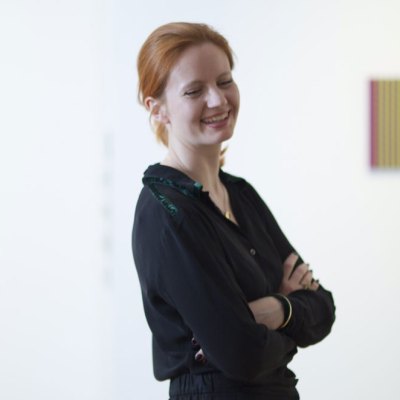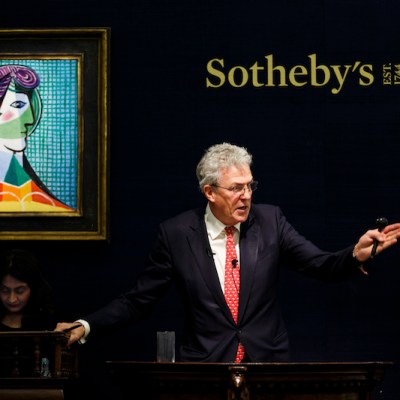‘It is all about creating energy around the market,’ said Christie’s global president Jussi Pylkkänen in response to my question about the reorganisation of the firm’s global auctions into new cross-category ‘marquee’ weeks. This month sees the inaugural Classic Art Week in New York (12–15 April). ‘The concept is to make our classic art experts work together to create a Maastricht-style event. Everything will be hung and viewed together, which will give the event a particular flavour and introduce post-war collectors to other fields. Most are already buying in six or seven categories.’
The work may be on view together, but it will be offered in separate sales: Antiquities, The Exceptional Sale, Sculpture, Old Master Paintings, Classical Japanese, and The Revolution Sale – a curated auction replacing the Renaissance sale and reflecting the radical political and artistic changes of the 18th and 19th century. Thematic sales, Pylkkänen explains, encourage sellers to consign. ‘Narratives are important in building people’s confidence,’ he says. Perhaps more telling is: ‘We are working towards making our sale weeks correspond to the major fairs – we are one business after all.’ There are many among the art trade who believe that the auction houses want all the business, and adding fair-style events to an enterprise already offering private sales is hardly likely to assuage fears.
As for the art on offer, a highlight of the week is Bernardo Daddi’s The Madonna and Child Enthroned with saints and angels. At first glance, this Florentine trecento gold ground might appear to be a monumental altarpiece but its dimensions reveal it to be a private devotional work just 76cm high. At its heart is a panel of an almost miniaturist vibrancy, detail, and delicacy. Even on this intimate scale, Daddi achieves a Giottoesque monumentality of form and spatial perspective and yet brings to it an elegant lyricism.
The Madonna and Child Enthroned with saints and angels (1330s), Bernardo Daddi. Courtesy Christies Images Ltd
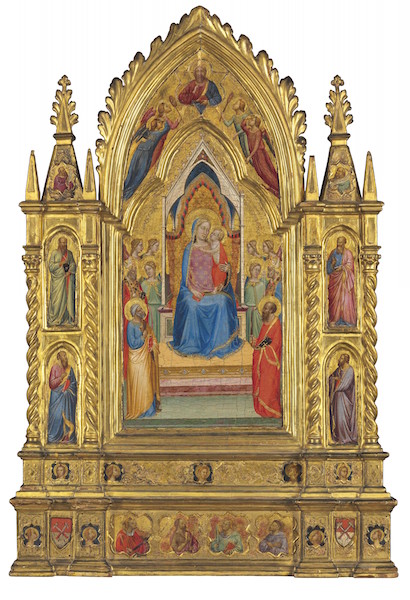
Intriguingly, Daddi’s Enthroned Madonna, datable to the mid to late 1330s, appears to have been reused by the Orcagna workshop some 30 years later – after the painter’s death – and given a new frame, including the lateral pinnacles, the double predella, and the crowning scene of the Apparition of God the Father. The figural component here has been attributed to the Master of the Misericordia. Although some of the framing is 19th century, the ensemble is 14th century – as the gesso and gilding bear witness. Condition is all in gold-ground paintings, and here it is very fine indeed. Offered on 14 April, the altarpiece is expected to fetch $4m–$6m.
A highlight of Sotheby’s Hong Kong Spring Series is the Pilkington Collection of Chinese Art. This choice and well-documented holding was amassed by the British collector Roger Pilkington in the late 1950s and ’60s, and now some 97 pieces are being offered by his descendants on 6 April. Although this group of ceramics and jades ranges from the Tang to the Qing dynasties, its museum-quality core centres on a small group of blue and white imperial Ming porcelains.
Two of the star lots emphasise the importance of foreign prototypes and motifs. Most curious is one of only three known Yongle ritual water vessels based on Syrian, Persian or, more likely, Indian metal prototypes. This complex piece with its long tapering spout emerging from a pear-shaped body atop a bulbous stem is a technical tour de force of the potter’s art, decorated with cobalt-blue scrolling hibiscus. Pilkington acquired it in 1967 for a substantial £5,000. Now it is set to fetch HK$35m–HK$45m (£3m–£4m).
Also made during the reign of the Yongle emperor (r. 1403–24) is the moonflask, similarly based on a Middle Eastern metal prototype. Once again, although technically challenging for a Chinese potter, its triumph is its decoration, essentially the translation of an Islamic geometric design adapted freehand to a domed, round surface. Six-pointed stars alternate with traditional patterns of lotus scrolls, waves, and flowers. HK$25m–HK$35m is expected for this rarity.
What is bound to cause the biggest stir, however, is the delicate melon ‘palace bowl’, mark and period of the emperor Chenghua (r. 1464–87). Such vessels mark the apogee of Chinese porcelains, their thin bodies famed for their silky, unctuous glazes and their decoration admired for a lighter and more subtly modulated palette. This piece, also acquired by Pilkington through the great London dealers Bluett & Sons, has an estimate of HK$50m–HK$70m (£4m–£6m). The sale is expected to total more than HK$225m (£20m).
Holy water vessel, Chinese, Ming dynasty, Yongle period. Courtesy Sotheby’s

Even more tactile – indeed, made to be handled, and enhanced by centuries of use – are the very early chess pieces that take a bow in Arts of the Islamic World at Sotheby’s London on 20 April. These formed part of the extensive collection amassed by the late German chess grandmaster and match arbiter Lothar Schmid. Crafted from ivory, alabaster, glazed ceramic, clay or bone, these pieces range from 9th- to 12th-century Persia and the Near East to central or south Asia, and also embrace luxe rock-crystal kings or queens from 11th-century Fatimid Egypt. Hitherto unpublished is an almost complete set of tiny Samanid ivory chessmen from Nishapur, dated to the 10th–11th century or even earlier. Estimates £800 to £50,000.
A quite different expression of civilisation is offered by the sale of the contents of the hôtel particulier and studio of the French society portrait painter, aesthete and war hero Bernard Boutet de Monvel (1881–1949), at Sotheby’s Paris on 5 and 6 April. Boutet de Monvel was hailed as ‘the handsomest man in Europe’ by an adoring American press, and it is not hard to see why. In his Autoportrait, place Vendôme of 1932, the artist-flâneur is seated at the window of a room at the Ritz, cane, cream gloves and dove grey hat in his hands and a trademark white daisy in his buttonhole (€200,000–€300,000).
Autoportrait, place Vendôme resized (1932), Bernard Boutet.

Another remarkable portrait painted in Boutet de Monvel’s refined, almost hyperrealist style is S.A.R. Le Maharadjah d’Indore (€300,000–€500,000), depicted wearing the Indore Pears – two near 47 carat diamonds specially mounted by Chaumet for the sitting. Comprising some 300 lots, the sale also includes the likes of art deco furniture by Jean-Michel Frank, and works by Bernard’s father Maurice Boutet de Monvel, a painter and illustrator best known for his watercolours for children’s books.
